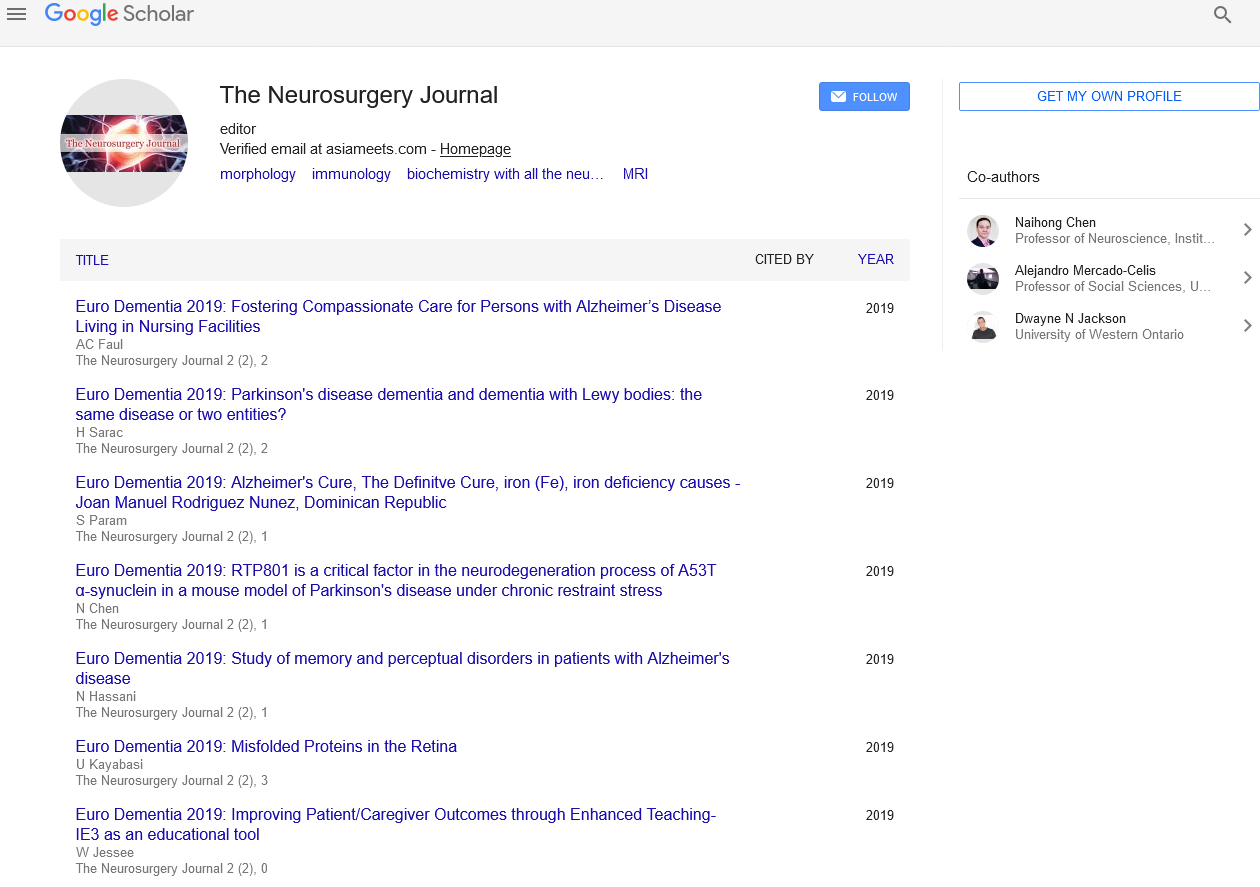a short note on brain ischemia
Received: 05-Aug-2021 Accepted Date: Aug 19, 2021; Published: 26-Aug-2021
Citation: Williams H. A short note on brain ischemia. Neurosurg J. 2021;4(1): 4
This open-access article is distributed under the terms of the Creative Commons Attribution Non-Commercial License (CC BY-NC) (http://creativecommons.org/licenses/by-nc/4.0/), which permits reuse, distribution and reproduction of the article, provided that the original work is properly cited and the reuse is restricted to noncommercial purposes. For commercial reuse, contact reprints@pulsus.com
Description
Brain ischemia is also known as cerebral ischemia or cerebrovascular ischemia is an ailment in which there is an inadequate blood flow to the brain to reach metabolic demand. This results in the shortage of oxygen supply or cerebral hypoxia and thus leads to the death of brain tissue or cerebral infarction/ischemic stroke. It is a sub-type of stroke alongside subarachnoid hemorrhage and intracerebral hemorrhage. Oxygen and vital supplements are carried in the blood through arteries – the blood vessels that carry oxygen and nutrient-rich blood to every part of the body.
Ischemia leads to modification in brain metabolism, alleviation in metabolic rates, and energy crisis.
There are two kinds of ischemia: focal ischemia, which is restricted to a selected region of the brain; and global ischemia, which encloses wide areas of brain tissue.
Symptoms of brain ischemia are close to that of a stroke and differ based on the part of the brain that is affected by the deficit of oxygen, in addition to how long the oxygen deprivation lasts. The following symptoms may last only shortly or may persist:
• Confusion.
• Coordination problems.
• Trouble in understanding what others are expressing.
• Dizziness.
• Inability or difficulty moving facial muscles.
• Slurred speech.
• Sudden strong headache.
• Loss of consciousness.
• Vision problems.
• Vomiting.
• Weakness on one or on either side of the body.
There are various treatment options for a person suffering from cerebral ischemia. The main objective of treatment is to resolve the restriction in the arteries and restore proper blood flow, thus minimize the risk of a stroke.
Various factors impact the best treatment for a person suffering from cerebral ischemia or the individual who is having an ischemic cerebral stroke. Surgery is sometimes carried out on an emergency basis. If an individual with cerebral ischemia features a complete obstruction or severely constricted arteries, surgery could also be required to stay far away from a stroke. If an individual features a moderately or severely narrowed neck (carotid) artery, a doctor may recommend a carotid endarterectomy. This prophylactic surgery carries away carotid arteries of fatty deposits (atherosclerotic plaques) before another TIA or stroke takes place. Carotid endarterectomy is an open surgical procedure that is used to remove the stoppage from the carotid artery. The surgeon makes a little incision within the neck, then carefully opens the artery's carotid and removes the blockage, reconstructing the artery walls to make the sure smooth blood flow. In some cases, the neurosurgeon may patch partially of a healthy vessel from the patient’s leg or use a man-made vessel to exchange the damaged artery.
Physicians use several medications to treat the condition that causes cerebral ischemia and minimize the risk an individual will put up with a stroke after a TIA. Medicaments that are used to direct blood clotting areas are often prescribed in the following:
Anti-platelet drugs: These medicaments make the platelets less likely to stick together and form clots. Aspirin is the economical and most common of these anti-platelet medicines. Other ant platelet drugs may be just directed solely or in combination.
Anticoagulants: These drugs choose specified particular proteins that influence clotting.





